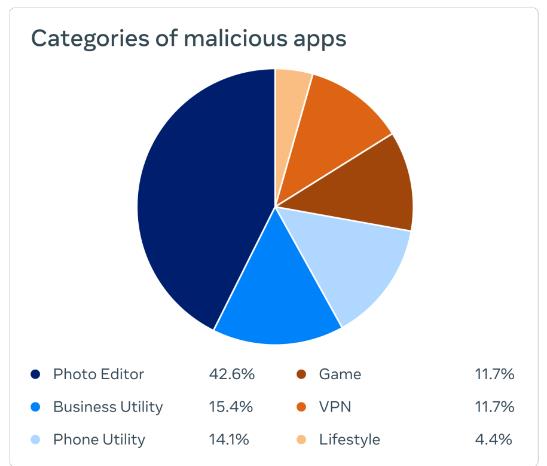your current location is:Home > TechnologyHomeTechnology
What are the key factors for the noise reduction capability of TWS headphones?


Among the new products launched by Apple last week, the one with the longest update interval is the AirPods Pro 2. The first-generation AirPods Pro was released in October 2019, nearly three years ago. Apple said that with the new chip H2, the noise reduction capability of AirPods Pro 2 is twice as high as that of the previous generation. Why did the chip change bring such a big boost? What exactly does the noise reduction capability of TWS (True Wireless Bluetooth) headphones like AirPods Pro 2 depend on? Let's talk about it this time.
clear terminology
Before explaining, let's take a look at some common words in the marketing of TWS (true wireless Bluetooth) headset products - active noise reduction, passive noise reduction, call noise reduction (AI call noise reduction), ANC, ENC, DSP, CVC and so on.
Active Noise Cancellation = ANC, which uses the microphone in the headset to actively collect external noise, and let the chip perform real-time processing according to the noise reduction algorithm, thereby generating sound waves with the opposite phase and the same amplitude as the external noise, and then canceling each other out with the external noise, At the end the user will hear the processed pleasant sound.
Passive noise reduction has nothing to do with the components and algorithms in the earphone, and its effect depends on the physical structure and material of the earphone. For example, the passive noise reduction effect of headphones (press-on and over-ear type) is worse than that of TWS headphones. The reason is that the sound unit is inserted into the ear canal when the latter is worn, while the former cannot prevent external noise from entering the ear. TWS earphones are divided into semi-in-ear and in-ear. Apple AirPods are semi-in-ear, while AirPods Pro is in-ear. In-ear headphones are more tightly inserted into the ear canal when worn, so the passive noise reduction effect is better. In addition, changing the headphone caps of different materials and sizes of TWS headphones can also effectively improve the effect of passive noise reduction.
ENC was first used in the field of gaming headsets. It mainly uses dual microphones to measure the user's voice orientation, and suppresses the noise in the environment while collecting the sound. It is said that it can effectively suppress 90% of the background environmental noise, and reduce the environmental noise by up to 35dB.
DSP noise reduction is mainly aimed at high and low frequency noise. The principle of DSP noise reduction is similar to that of ANC noise reduction. The difference is that the forward and reverse sound waves of DSP noise reduction directly neutralize and cancel each other inside the system.
CVC was originally CSR's call noise reduction technology. After CSR was acquired by Qualcomm, CVC technology has been widely integrated into the sound-related solutions of Qualcomm chips. Its principle is to pick up all the background noise through the secondary microphone, the main microphone to receive the speaker's voice, and then to eliminate the received ambient noise through an algorithm to enhance speech intelligibility, which can reduce the ambient noise by about 35-40dB.
AI call noise reduction is actually developed by other manufacturers, similar to CVC call noise reduction technology, but like CVC, it cannot solve the noise reduction needs of users when listening to music, watching videos, etc.
Noise reduction chip equals basic capabilities
Chip + algorithm + design + hardware = excellent active noise reduction capability.
The space of Bluetooth headsets is limited, and the main control chips are all SoC types, that is, one chip can achieve multiple functions. Early Bluetooth headset chips only had basic functions such as Bluetooth connection transmission, audio processing, and operation control. However, with the launch of Apple's AirPods in 2016 with TWS (true wireless Bluetooth) headphones, and the launch of AirPods Pro in 2019, most manufacturers have paid more and more attention to the noise reduction capability of headphones. Now the Bluetooth main control chip already has a multi-core CPU, and also adds AI voice, intelligent active noise reduction and other functions.
With the exception of a few companies such as Apple and Sony that use self-developed chips for their Bluetooth noise-cancelling headphones, most other manufacturers use chips from upstream suppliers. At present, the suppliers of active noise reduction Bluetooth SoC chips include Qualcomm, Hengxuan, MediaTek (Luoda), Actions, and Lanxun, among which the first three occupy a larger market share. Generally speaking, the price of TWS headphones with Qualcomm chips is higher, but some brands of high-end headphones also use Hengxuan chips. The simplest criterion for judging whether the headphones use Qualcomm chips is whether they support Qualcomm's exclusive APTX Bluetooth audio. Self-developed algorithm to improve noise reduction effect and function
Consumers who have followed and used TWS noise-cancelling headphones may find that with the same Bluetooth chip, Bluetooth headphones with similar shape and structure, the noise reduction effect is very different, and one of the important reasons is the algorithm.
When selling Bluetooth chips, chip manufacturers will provide "overall solutions", which are called public versions in the industry, including chip specifications, parameter manuals, troubleshooting solutions, and noise reduction algorithms.
After the headphone manufacturer takes back the complete set of solutions, they will carry out secondary development based on the manufacturer's basic algorithm according to the components and design, adding functions and adjusting the noise reduction effect. For example, the increasingly popular adjustable noise reduction level or adaptive noise reduction technology, the former allows users to adjust the noise reduction depth of the headset in the supporting App; the latter uses the chip and the algorithm to let the headset automatically adjust to the ambient noise. The level is intelligently adjusted. In the noisy public transportation environment, the deep noise reduction is automatically turned on, and in the indoor environment, the mild noise reduction is turned on, so as to effectively protect the ears and hearing.
Manufacturers that do not pay attention to R&D will directly produce with the public version, which results in different noise reduction effects for headphones using the same chip. Therefore, manufacturers that can handle chips + algorithms independently, such as Apple and Sony, have obvious advantages in noise reduction. However, it is not that the manufacturer's secondary development is a positive optimization of the noise reduction effect. The professional audio product evaluation website found during the dismantling evaluation that a certain domestic noise reduction headset has been adjusted by the manufacturer. The noise reduction effect is similar to the public version of the headset. The ratio does not rise but falls.
Technical characteristics determine the number of microphones
As mentioned above, the passive noise reduction capabilities of different design types of headphones have their own strengths and weaknesses, but well-designed headphones and semi-in-ear headphones will have better noise reduction than shoddy in-ear headphones. For example, Sony's WH1000XM5, XM4 wireless noise-cancelling headphones, Bose700, and QC series of Bluetooth headphones are well-known for their noise-cancelling effects.
In addition to the main control chip, the microphone is also very important for the effect of active noise reduction. Active noise reduction can be divided into feed-forward active noise reduction, feedback active noise reduction, and a combination of the two according to the position of the pickup microphone.
Feedforward noise reduction mainly collects ambient noise through the noise reduction microphone on the outermost side of the earphone, and sends the noise signal to the main control chip to process and convert it into a reverse sound wave signal. The advantage is that it has more processing time, so it is suitable for use in Reducing the high-frequency noise with a frequency of 1-2Khz is also more sensitive to wind sound processing due to its position outside, which can not only avoid higher frequency oscillation, but also prevent wind shearing.
The feedback noise-cancelling microphone is located near the sound-emitting unit in the earphone. Due to the advantages of accurate positioning and the ability to detect in-ear noise, it can quickly adjust the voice signal, improve the noise cancellation response time, and can also handle a wider range of audio frequencies.
Hybrid noise reduction combines the advantages of feedforward and feedback noise reduction. Now active noise reduction TWS earphones will have a set of microphones on the inside and outside of the left and right earphones, totaling 4 noise reduction microphones. There are also higher-end products in the left and right earphones. Add a noise-cancelling microphone to the middle for better results.
related articles
Article Comments (0)
- This article has not received comments yet, hurry up and grab the first frame~













